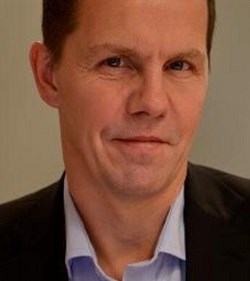






Tasked with launching and developing TV currency, online video currency and total video currency, covering all TV and video content across devices, Anshelm looks at synergies between TV and video for different target groups. He shared the relevance of this for countries in Africa. If content is king then context is queen, started Anshelm. "You know what kings and queens do together, so that's a good starting point," he joked.
Firstly, he provided a snapshot of the TV-viewing landscape in Sweden in 2017. It's consumer-driven, and the consumer spends increasing amounts of time online watching video, as the infrastructure and ad spend is there. In terms of devices, there's an average of 9 per household with 17 screens in his house of just 3 people.
This really opens up consumption where the amount of actual TV set households is decreasing. It's proof that consumers watch the content they're interested in at any time, anywhere, on any device.

Interestingly, Anshelm says they're not taking the return path data or RPD step, instead doubling their TAMS panel size, linked to a streaming meter to catch and overlap linear with online viewing on every device mapped in the household. Census data is then also divided by device, then linked to online panels from Kantar as the core, complemented by a Nepa panel for reach. How it works is thus: People in the TAM panel get a questionnaire and the actual and claimed viewing is then correlated. Anshelm explained that the glue then, unique to the market, is a special copy code from the ad server over all platforms.
He said this may not seem relevant to Africa just yet, but it will be. He feels the industry could build the model together using RPD data, especially if it is linked to house router meter data, or using ad server data.
Fuhrer adds that a number of companies already provide basic household data. It's a good source but there are issues and compromises in this approach when compared to that of using a panel. For Africa, it all depends on the opportunity. Without a panel, go with the best that's available.
Advertisers definitely need a way to measure accountability in Africa the same way as is done in the rest of the world, added Beck - we need a revolution of sorts, to assess all the data out there and go for it.